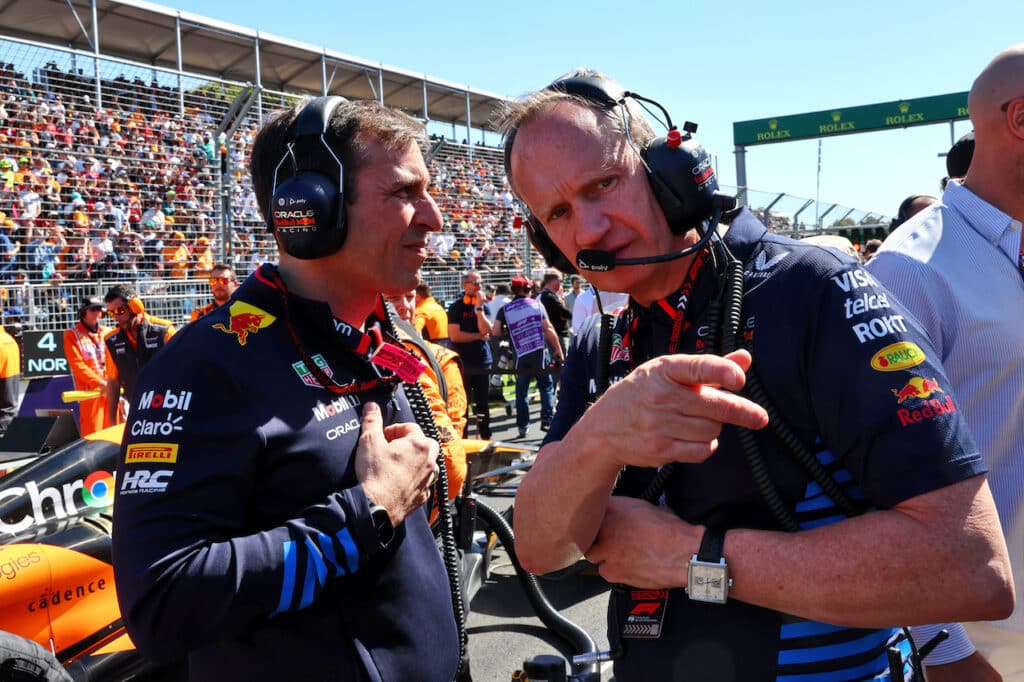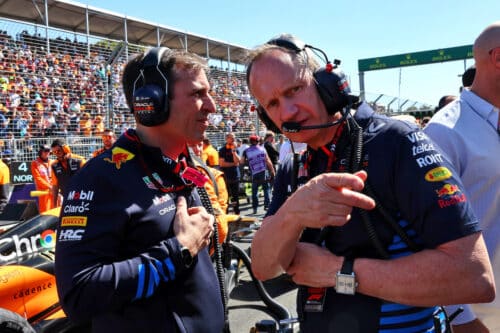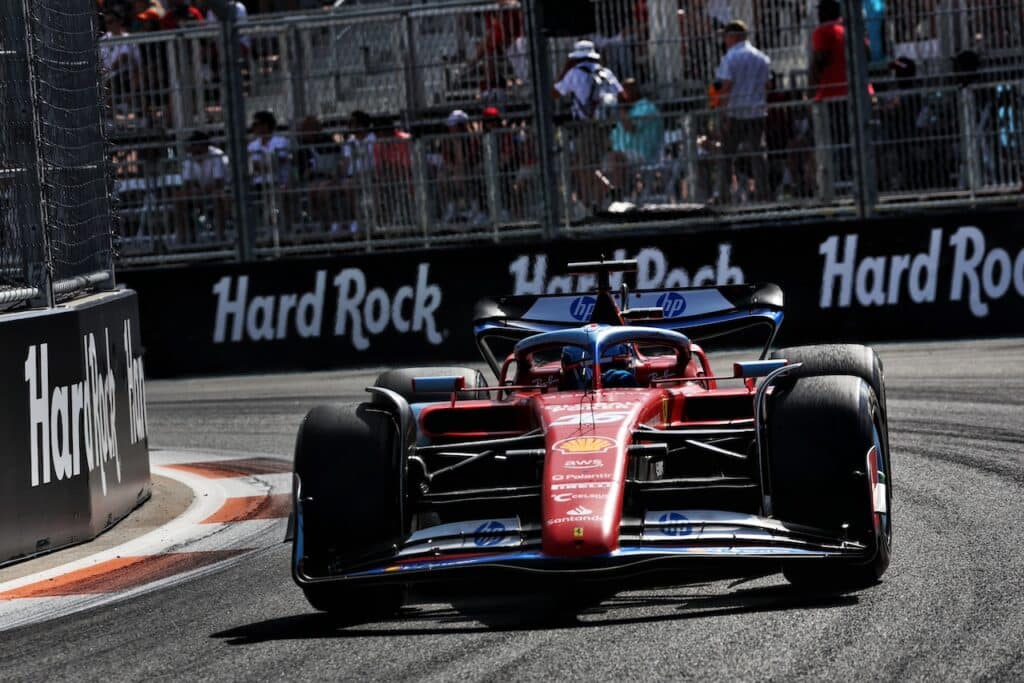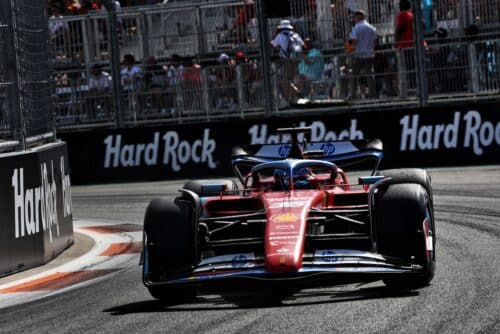Pirelli at Silverstone with a new hard compound
“We decided to test it here on an experimental basis,” Hembery said

After three consecutive street circuits, Formula One returns to one of the most traditional permanent circuits of the year: Silverstone. For Pirelli, this can be considered a second home race, as the Italian company's logistics hub is located in Didcot, just an hour away from the circuit.
During free practice on Friday, the teams will have the opportunity to test a new hard compound. Also last year, some free practice sessions were used by Pirelli to test a number of experimental compounds. Each team will have two sets of the experimental compound available for the two sessions on Friday, in addition to the tires they are normally allocated, before returning to the P Zero Silver hard and P Zero Yellow soft for the rest of the race weekend.
Last year, the early stages of the British Grand Prix were characterized by rain, so the Cinturato Green intermediate and the Cinturato Blue wet will also be available to the teams.
With its many fast corners that put a lot of lateral energy onto the tyres, Silverstone often sees a wide variety of weather conditions over the race weekend, with temperatures ranging between 15 and 30 degrees centigrade. The asphalt is quite abrasive, which further increases tire wear, while the tire structure has to cope with long periods when the cars are at top speed and under full acceleration.
Il Pirelli Motorsport Director, Paul Hembery, commented: “Silverstone is one of the symbolic circuits of the Formula One calendar, precisely because it is so demanding on the drivers, on the cars and on the tyres. For this reason we chose to test an experimental hard compound here, during free practice, which we could use in the future. The new tire has a slightly wider working range, which should allow teams to more easily bring the tires into the right operating temperature. But with such a balanced championship, our priority is to ensure that no team has any advantage.
We want to keep tire performance at the highest level for as long as possible, so this is a valuable opportunity for us and all the teams to gather further information about the potential effect of a new compound, with a view also to obtaining some data for the future.
Silverstone is a circuit where a lot of energy is discharged; If we add to this the unpredictable weather conditions, obtaining excellent tire performance and implementing an effective strategy are essential ingredients to guarantee success".
The man behind the wheel, Paul di Resta (Force India), commented: “Silverstone is an ideal place, for me the home race; it's a place where you can truly appreciate what a Formula One car is capable of, particularly when it comes to aerodynamic grip and change of direction. We can't help but talk about the speed of corners like Maggotts and Becketts, because there really is nothing like it anywhere else in the world. When you run on low fuel and on new tires to get the qualifying time, the feeling is crazy.
I also like the new section of the track and every year it gets better and better. The new layout has certainly created more overtaking opportunities, especially with the introduction of DRS, and it's a lot of fun to drive here even though the circuit is very demanding on the tyres.".
The Pirelli test driver, Lucas di Grassi, commented: “I drove on the new Silverstone circuit during the 2010 British GP and I consider it very interesting: the high speeds and the remarkable energy are the main characteristics, and they have a great effect on the tires because of all the aerodynamic grip . But traction is also particularly stressed in the slower and more technical sections of the circuit, particularly in terms of combined acceleration, especially when taking the corner and accelerating at the same time. The combination of hard and soft tires is ideal at this circuit, where the soft compound will no doubt be used for qualifying.
The biggest difficulty in terms of set-up is the unpredictability of the weather conditions, so the driver must concentrate solely on his car and gather as much information as possible during all sessions.
I tried the experimental hard compound during the Jerez tests at the beginning of this year: compared to the current hard compound, it has better grip and different wear. It is particularly effective when temperatures are high and in difficult track conditions, so you have a tire that is faster and lasts longer”.
Technical notes on tires:
• One of the fastest corners at Silverstone is Turn 9 (Copse) which the single-seaters take at 290km/h, generating a lateral force of 5g. The tire tread temperature can exceed 110 degrees centigrade at this point, and good lateral grip becomes crucial to achieving the fastest lap.
• The track was partially redone last year but still remains uneven. Teams generally race with high downforce to ensure good aerodynamic grip but must adjust the suspension to take track irregularities into account: many of which are absorbed by the tyres.
• Pirelli has never experienced a completely dry race at Silverstone or used hard tires in racing conditions: last year all cars started the race on intermediate tyres, with the top five drivers adopting similar strategies, without using hard tires.
if you want to always be updated on our news
Follow us here


![Formula 1 | Capelli: “Newey in Ferrari? Right man at the right time” [VIDEO]](https://f1grandprix.motorionline.com/wp-content/uploads/2024/05/newey-ferrari-redbull-1024x548.jpg)
![Formula 1 | Capelli: “Newey in Ferrari? Right man at the right time” [VIDEO]](https://f1grandprix.motorionline.com/wp-content/uploads/2024/05/newey-ferrari-redbull-500x268.jpg)
![Formula 1 | Capelli: “Lambiase is the most important person for Verstappen” [VIDEO]](https://f1grandprix.motorionline.com/wp-content/uploads/2024/05/lambiase-f1-redbull-1024x553.jpg)
![Formula 1 | Capelli: “Lambiase is the most important person for Verstappen” [VIDEO]](https://f1grandprix.motorionline.com/wp-content/uploads/2024/05/lambiase-f1-redbull-500x270.jpg)
![F1 | Imola and Ferrari's all-in for the 2024 season: the analysis [VIDEO]](https://f1grandprix.motorionline.com/wp-content/uploads/2024/05/f1-gp-imola-ferrari-1024x554.jpg)
![F1 | Imola and Ferrari's all-in for the 2024 season: the analysis [VIDEO]](https://f1grandprix.motorionline.com/wp-content/uploads/2024/05/f1-gp-imola-ferrari-500x271.jpg)
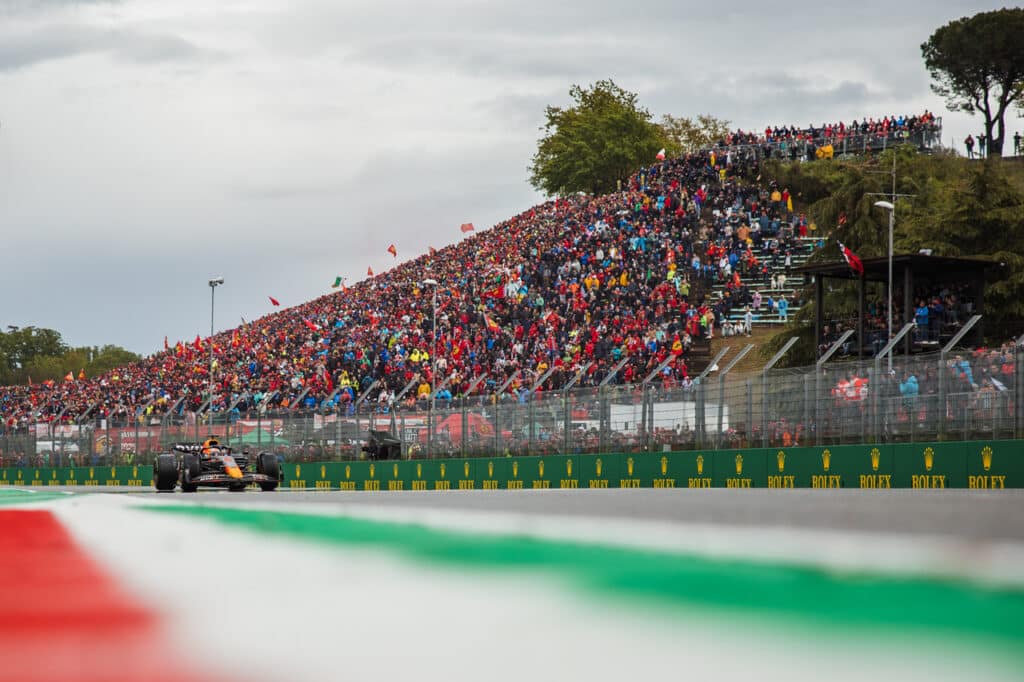

![Formula 1 | Newey: “Settlement 2026? I don't know if it will be enough to make me stay" [VIDEO]](https://f1grandprix.motorionline.com/wp-content/uploads/2024/05/f1-newey-redbull-1-1024x553.jpg)
![Formula 1 | Newey: “Settlement 2026? I don't know if it will be enough to make me stay" [VIDEO]](https://f1grandprix.motorionline.com/wp-content/uploads/2024/05/f1-newey-redbull-1-500x270.jpg)
